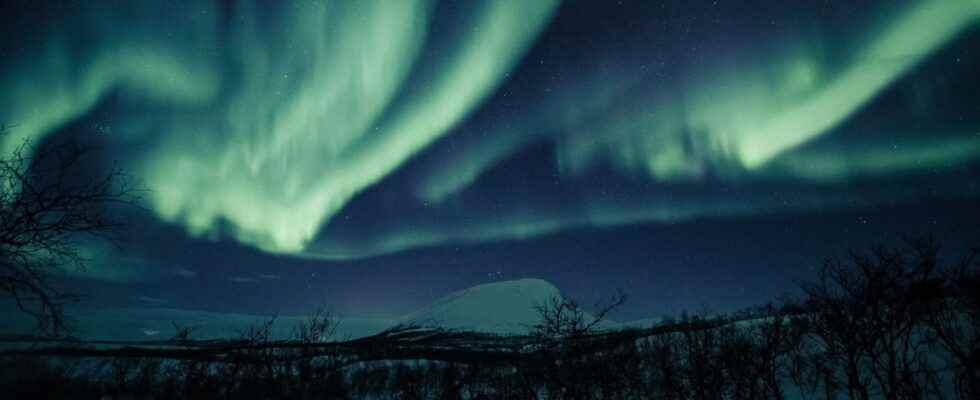Colorful northern lights are the dream destination of many. But they can usually only be seen in the far north. But now the chances of observing the fascinating glow of the sky here could also increase.
Strong solar flare
A strong solar flare that occurred on Thursday evening is responsible for the possible appearance of the northern lights. Solar flares are sudden bursts of radiation on our central star, with which large quantities of high-energy particles are often thrown into space.
“According to the current status, the eruption and the associated mass ejection took place precisely directed to the earth. Depending on the speed of the plasma cloud, it will reach the earth in the time window from late Friday evening to Saturday evening, ”explains Björn Goldhausen, press spokesman and meteorologist at WetterOnline.
The eruption on Thursday was classified in the strongest class “X”, but only given the lowest class “1”. According to NASA, an eruption with the strength X2 is twice as strong as the one that has now occurred – only from X10, i.e. ten times the strength, but the space agency speaks of an “unusually intense” eruption.
The chances of seeing the northern lights in mid-latitudes would thus increase significantly and are better than they have been for a long time.
Where could I see northern lights?
The sky does not offer ideal conditions everywhere in Germany to see the northern lights. “Unfortunately, the weather does not play well in all parts of the country. The night of Saturday begins still widely clear. In the course of the course, however, dense clouds are already gathering in the west and towards morning it even rains a little in the southwest. From the Baltic Sea to the edge of the Alps, however, the sky usually remains clear. On the night of Sunday the chances of seeing the northern lights dwindle, because then dense clouds also pass through in the east again and again ”, says the meteorologist.
In the east, however, the view of the starry sky is now also clear. In the western half, however, the sky is mostly completely overcast.
New solar cycle begins
The current outbreak on the sun almost reached a strength of the highest category X. The last outbreak with a similar strength did not occur until the summer of 2021. It caused the GPS system to fail for around an hour and interference in radio reception for hours. “Unlike this time, however, the outbreak occurred in the summer at the edge of the sun and was not exactly earth-directed,” said Goldhausen.
Both outbreaks mark the “reawakening sun”. While it was rather quiet on our fixed star until the end of 2019, activity has increased again since then. The peak of the current solar cycle is expected in summer 2025. However, experts assume a rather weak cycle.
Consequences for technology
If such a solar storm hits the earth, it can have serious consequences for satellites, communication and energy supply systems. As the US space agency Nasa and the weather agency NOAA announced, the energy emitted by this could also have negative consequences.
The radiation could not harm people, but “if it is intense enough it can disturb the atmosphere in the layer in which GPS and communication signals are transmitted,” said NASA.
The start of the German Esa astronaut Matthias Maurer to the ISS space station, which is planned for Sunday, is therefore not in danger.
